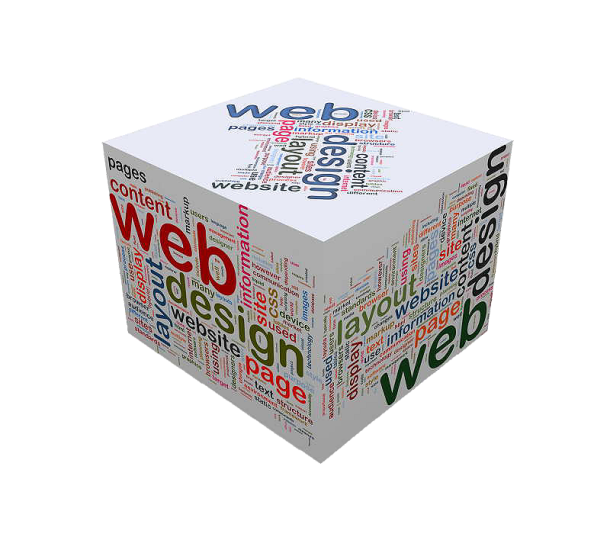Making a Great Landing Page
How to get them to BUY when they get to your landing page.
So, you've done your research, optimized your web pages and even setup an AdWords campaign. After all your hard work, you are finally coming up in the top for your keywords and traffic is coming in. But the phone isn't ringing, and your bounce rate is too high. What could be wrong? Maybe it's your landing page.
A bad landing page can spell disaster for any marketing campaign, and if you're working on a shoestring budget, it can be even worse. It's a real shame to lose most of your traffic because you just threw up a page without much thought to it. There really is a science to creating a great landing page. Sure you'll have to test, tweak, and refine; every audience and situation is different, but there are some important dos and don'ts all landing pages should follow.
DON'T make it hard to find the call to action.
The entire idea of a landing page is to get people to call you, buy, sign up, supply you with information, download something, or otherwise do something. If they have to look for it at all, they're simply not going to bother. Make sure your pages "flow" to the call to action.
DON'T send people everywhere at once.
If your landing page is designed to generate leads or sales, why distract them with banners, newsletter signups or other paths away from the sale. Make it perfectly clear what they're getting and what's going to happen. Then, send them down the road to profitable bliss (for you at least) without giving them any other paths to follow. In other words, if you have options for them to sign up to a mailing list, purchase your product, watch a video, a link to testimonials, and your latest blog posts all on the same landing page, people will wander everywhere!
DO make them an OFFER they can't refuseThere are a few reasons why people won't buy what your selling either on your website or off. They don't want it, they can't afford it, or they don't trust you. When creating your offer, there are some essential rules to follow when setting prices, targeting the right market and building trust in your visitors.
DON'T look shifty or spammy
People might shop online, but they still don't trust it as much as they do their local retailers. So, if they doubt the validity and trustworthiness of a site, even a little bit, they'll go somewhere else to buy the product. All consumers are the same. The only difference is how much it takes to earn their trust. So, make sure people can instantly see you're legitimate.
Lots of websites use verification seals like Verisign to show legitimacy, but it's not the only way to do it. Testimonials, client lists, links to external proof, and reviews are all great sources of verification. Make sure to use them and make sure they're easily visible above the fold to prevent people from just clicking away to another site. This part of your OFFER is called Social Proof.
DON'T send them to Facebook!
This is a matter of Facebook usage and how you are building Social Proof, so ok, if you use Facebook for coupons, discounts and other trade-ins for "Facebook Likes", then ignore this one. But know this: a recent study showed that "Facebook Likes" do NOT increase trust. If you don't believe me, Google it.
For others that have no idea about Facebook and do not use it, many of you rush to Facebook on a webmasters insistence, and create a poor Facebook page just to have something. Then the Webmaster links an icon to this page, and maybe you even put up a Facebook "Likes" module that has 3 Likes; including yours. The only thing worse than no Social Proof if low Social Proof. Look, you've already won; they are on your site. Why send then elsewhere or distract them with useless Facebook comments? Try using Twitter instead, install a free Twitter module on your site to display your latest Tweets, then tweet about product specials, new products, and other info you want new and existing clients to know. Use keywords in your tweets and always include a link to the site.
DON'T overload visitors with graphics and text
Your landing page has one purpose and one purpose only. Anything that doesn't help move people toward your call to action is unnecessary and is just stealing attention away from the good stuff. Get rid of it. If the page is just too bare, add in some graphics or text, but make sure it doesn't overpower the rest of the page. The speed of your site is very important; make sure your images are resized and compressed (like .jpg). Never use .BMP files or images right from your digital camera, most cameras have a default resolution of 3000 pixels wide! The most you need for a site is 640x480, if you want the picture to take up the whole page. I generally keep my images down to 350 pixels in width so they don't dominate a page, and the pages load much faster. You also may want to compress your CSS and Javascripts for faster loading times.
People don't Read, they SkimMake sure that even the fastest skimming visitor gets the gist of all the important points as they scroll down the page. To do this, take out all the text except for headings, bullet points, and bolded or otherwise highlighted text. Then, read down the page. If you have all the important points, and they read like a bit of a story, you've done your job. If not, go back through the page and change the formatting until it does. People (and search engines) like to read a web page like a newspaper article; Headlines, paragraph structure, even grammar will make a big difference in traffic and conversions.
Want to know more about how to write killer content? Check out our Internet Marketing page.

